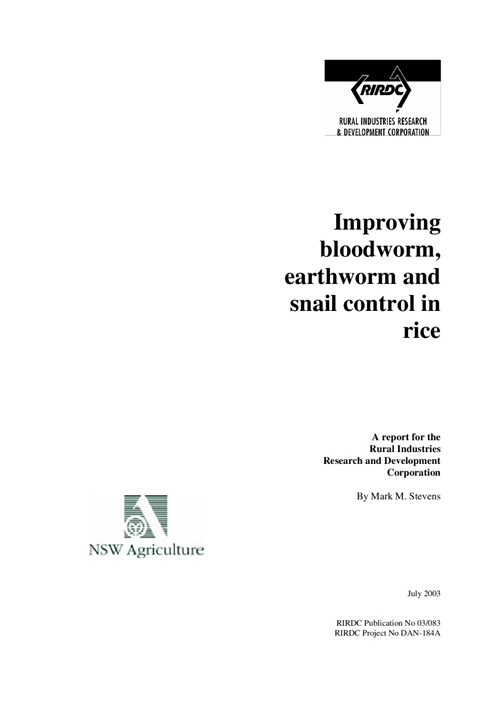In comparison to overseas producers, Australian rice growers have to contend with relatively few
serious invertebrate pests. Most pests occur at damaging levels only during crop establishment, with
bloodworms, aquatic snails and aquatic earthworms being the main causes of crop damage.
This project evaluates potential new control procedures for all three of these pests, with the overall
goal of minimising crop damage whilst limiting the use of synthetic pesticides to the lowest possible
levels. A collaborative bioassay study conducted with scientists at the University of Florida has
provided useful information on how bloodworms respond to different bioassay conditions, allowing
data from overseas studies to be validly compared to that generated in Australia.
Field trials against bloodworms confirm the suitability of new bloodworm control treatments, whilst
work on chlorothalonil demonstrates its efficacy against snails, and it’s potential to replace copper
sulfate as the main agent of snail control. Laboratory bioassays highlight the potential of several
chemicals for aquatic earthworm control, whilst studies on crop rotations open up the possibility of
cultural management of this pest. Studies on bloodworm oviposition behaviour indicate that highly
selective control of this pest may be possible using oviposition deterrents.
This project was funded from industry revenue which is matched by funds provided by the Federal
Government.
This report, a new addition to RIRDC’s diverse range of over 900 research publications, forms part of
our Rice R&D program, which aims to improve the profitability and sustainability of the Australian
rice industry.





